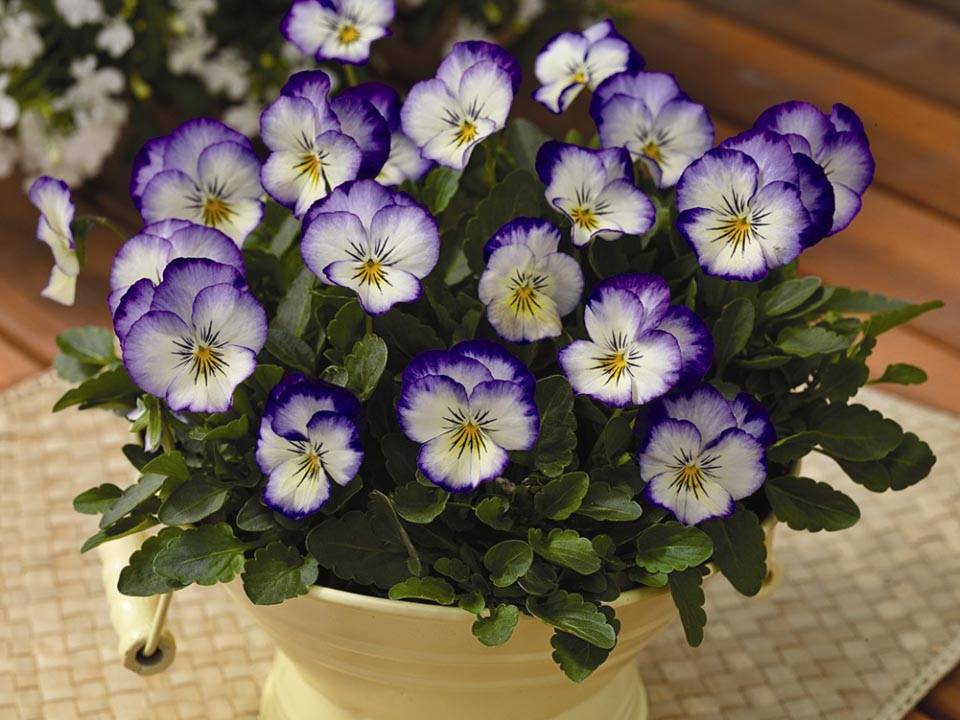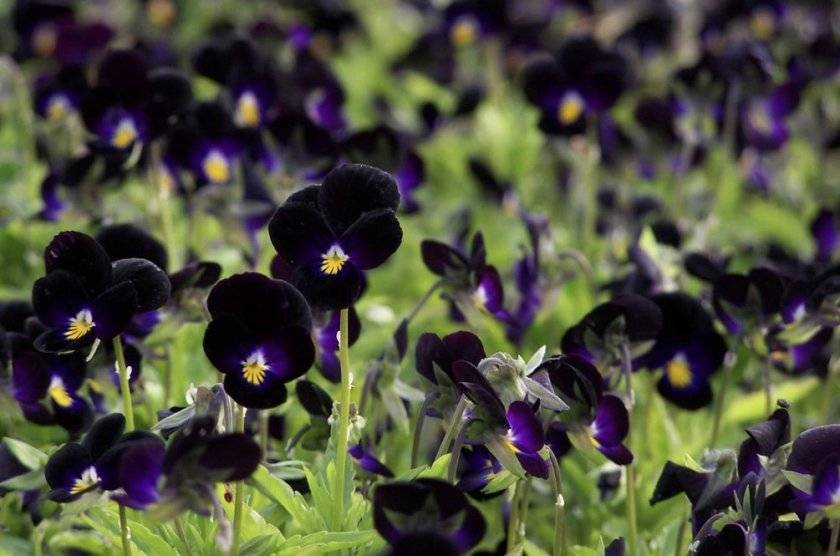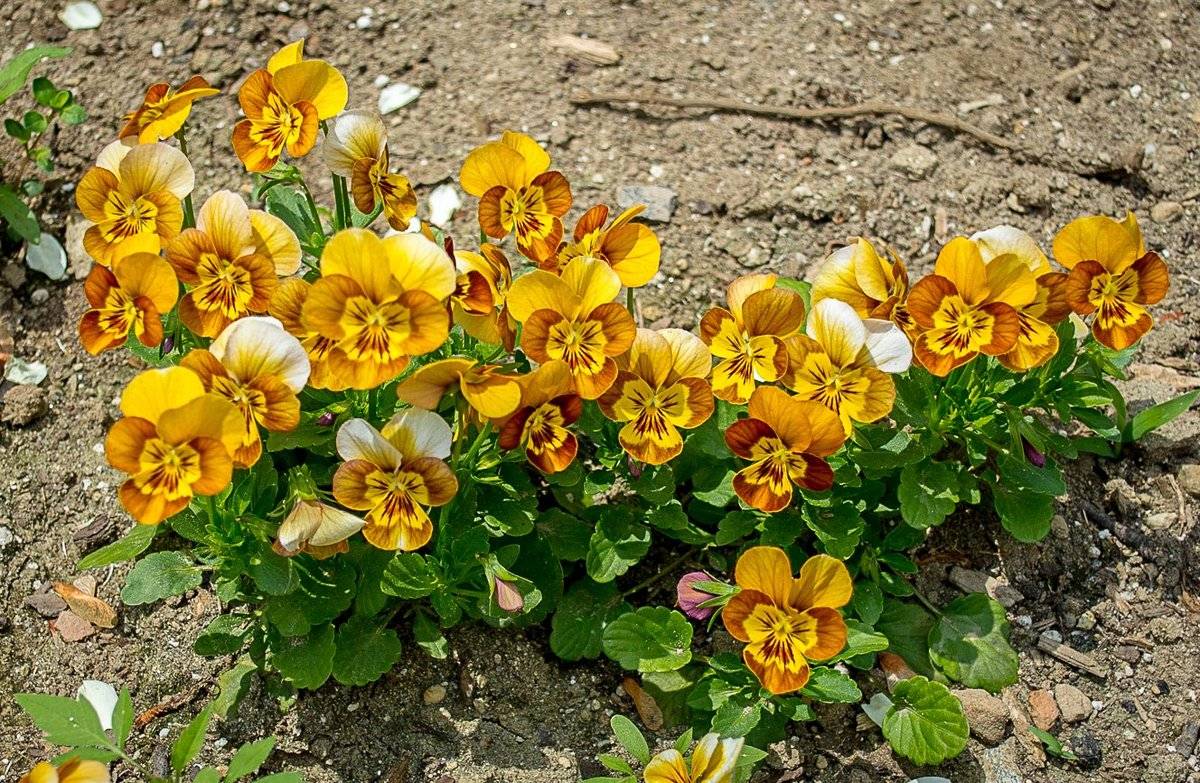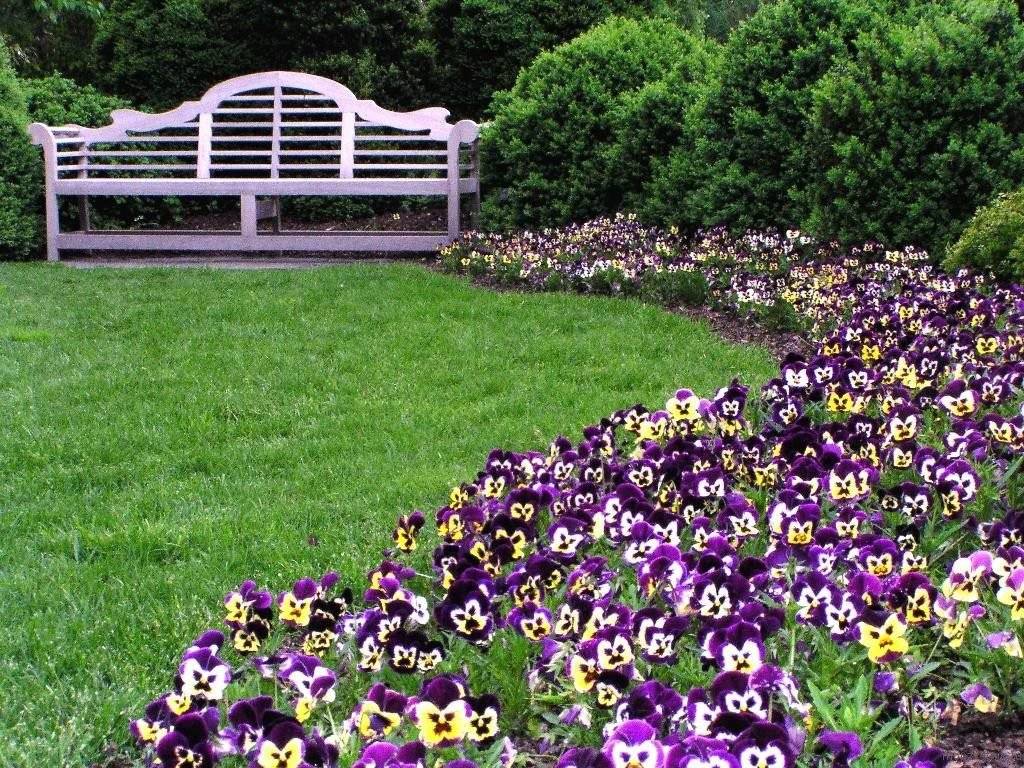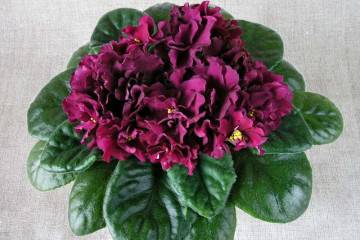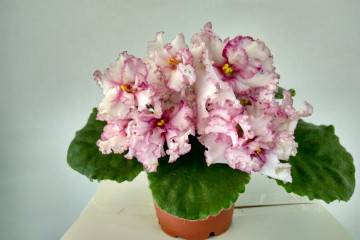Horned violet - description, varieties and characteristics of the variety
Content:
There are few plants that can bloom for a long period of time. Horned violet is a flower, with proper care on which the buds bloom all summer. Further information on growing perennial horned violets in the open field.
What does a horned violet look like?
The culture belongs to the violet family. The plant has several names: horned violet, viola, Pansies.
History of appearance
The horned violet is native to the mountainous regions of Spain and France. It is a perennial plant that forms pillows of stems around itself. Viola received the name for a process that looks like a spur or horn.
Varieties
Breeders have developed many varieties of horned violets. The most effective are the following:
- Johnny;
- Chrysalis;
- Perfection;
- Gzhel patterns;
- A penny;
- Cheerful family;
- Blue Moon;
- Black magic;
- Yoke.
The size
The height of violet bushes varies between 10-30 centimeters. The leaves are green, pointed, about 4 centimeters long. The root is creeping, due to which the plant grows well, forming a carpet.
Color
Violet petals can be monochromatic, two-color, three-color. The buds, depending on the variety, are colored in shades of white, lilac, yellow, purple, red.
Flowering time
The flowering period of the horned violet is long: it begins in early May and ends in late September. In spring, the flowers are the largest, by autumn they become smaller, and there are fewer of them.
Habitat
The plant lives in many parts of the Earth. It can be found in Western Europe, Central Africa, South America, New Zealand. Violet prefers to settle in mountainous areas.
Features of the
After flowering, a tricuspid capsule is formed. When the fruit dries up, it bursts, seeds pour out of it. They can spread out to a distance of 5.5 meters and germinate on their own.
Planting and grooming recommendations
Growing viola is easy. In order for a plant to delight with its flowering for a long time, you need to properly follow agricultural techniques.
Soil, illumination, degree of moisture
The culture prefers to grow in light partial shade. In the sun and in full shade, the stems will stretch out, the flowers will shrink. In shady and humid conditions, the bushes can be attacked by snails and slugs.
A culture can develop in any substrate, but it will look most decorative when grown in loose, breathable soil. If the soil is heavy, you need to lay out drainage at the bottom of the planting pit.
Water the bushes as the layer of earth dries up. The hotter and drier the summer, the more often the soil needs to be moistened.
Landing in open ground
Horned violets are planted on the site in 2 ways: by seeds and seedlings.
Features of planting seedlings
Seedlings grown or purchased in a garden center are planted in the ground as follows:
- Dig holes 10 cm deep.
- When landing in heavy soil, drainage from small stones is laid out on the bottom.
- Pour the earth, set seedlings in the middle of the hole, cover them with soil to the lower leaves.
- Lightly compact the soil, watered.
- The root circle is mulched.
The distance between the bushes is 10-15 cm. Growing, the violet will create a beautiful carpet.
Features of planting seeds
You can plant seeds in open ground in spring and autumn. Spring planting is done after the ground thaws. In the fall, seeds are planted after night frosts. This condition must be observed so that the seed does not germinate prematurely and does not die from severe frosts.
Unpretentiousness
Most varieties of horned violets are unpretentious in care, they tolerate winter cold well. Shelter is required for shrubs growing in containers. They need to be dug into the ground together with the pots, covered with spruce branches.
Prevention of diseases and pests
Viola, when planted in contaminated soil, or with excessive moisture, can be affected by putrefactive microorganisms. For prophylaxis in the spring, perennials are sprayed with fungicides, and they also observe agricultural techniques.
Possible pests of violets are slugs, snails, aphids, violet mother-of-pearl. To prevent their appearance, the bushes are sprayed with infusion of potato tops, onion husks. Tobacco is scattered around the plants. Insecticides are used from chemicals.
Can I plant indoors
Shrubs planted in a pot can be kept outdoors in the summer and brought indoors in the fall. By placing the container with the plant in a well-lit place, the florist will be able to admire the colorful flowers of the viola for some time.
When and how it blooms
Horned violet buds bloom from spring to autumn. The brightest and largest flowers can be observed during the first wave of flowering. Depending on the variety, the petals can be of one, two or three shades of color.
The size of the blossoming buds is 3-5 cm. In the middle there is a yellow or orange peephole. An adult bush has up to 60 simultaneously blossoming buds. Color - white, yellow, orange, lilac, violet, red.
Breeding features
On the site, you can propagate a violet in several ways. After flowering, seeds are formed on it, which themselves are scattered to a distance of 5-5.5 m. They germinate, and the next year flowers form on the bushes.
Another breeding method is dividing the bush. Children grow around the adult plant, which can be separated and planted on the site. It is also easy to spread the violet with layers, pinning them and covering them with earth. After rooting, young bushes are separated, planted separately.
Popularity of use in landscape design
Two-horned violet is popular among both specialists and amateur flower growers. Landscape designers use it for landscaping city parks, squares, alleys, flower beds. Violets are planted monochrome, or in combination with other decorative undersized plants.
In private gardens, the violet can be placed in the foreground of the mixborder. In addition, suspended in a flowerpot, it will serve as a decoration for a veranda or balcony.
Horned violet is an unpretentious garden flower. The plant is easy to propagate on its own and then plant the local area with various varieties of culture. With proper care, the violet will delight with flowering from spring to the first frost.
